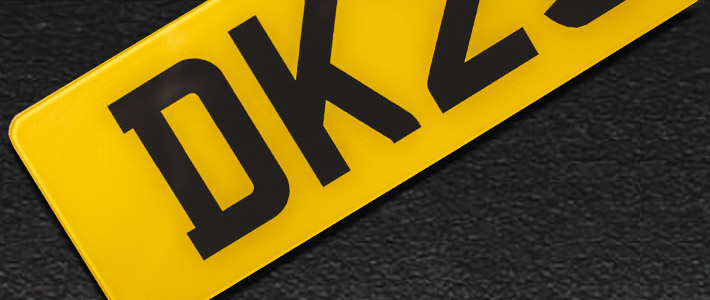In the UK, personalised number plates are growing in popularity among drivers. Given the high number of vehicles on the road, personalised number plates can make your car stand out. It allows you to express your creativity and improve the look of your car. There are many reasons why personalised cars are becoming popular. Whatever your reason, it is crucial to comprehend every step of the process before getting a new personalised number plate for your vehicle.
There are important DVLA regulations, rules, and information you’ll need to understand for acquiring and transferring a number plate. You could face a fine of up to £1000 and other penalties if your personalised number plate does not abide by DVLA regulations. To help you better understand buying or selling personalised number plates, here are a few things you should need to know.
How Can You Get a Personalised Number Plate?
You can get a personalised number plate from DVLA directly or through independent vendors that specialise in selling number plates. If you’re buying your personalised number plate from a private seller, make sure the seller is authorised and government-registered to sell personalised plates. Most of these private sellers will either auction the plates or let you purchase them for a specified amount. If you need a new set of plates printed, check out our number plate maker
How Can You Sell a Personalised Number Plate?
According to the law, a personalised number plate may be given or sold to another person as long as the personalised number plate will be officially assigned to the new vehicle. In selling your personalised plate, you have two options; either work with a private dealer or broker who specialises in selling personalised number plates, or handle the sale yourself. If you organise the selling yourself, you’ll need to provide the buyer’s car with your personalised number plate and transfer the certificate to them.
Types of Personalised Plates You Can Buy or Sell
In the UK, number plates come in four different basic types. Understanding each type is crucial if you want to avoid fines and determine whether the number plate you’re buying or selling is valid.
- Current: This is the type of number plate that is being used for new car registrations today. There are seven characters in this type; it consists of two letters indicating the area where it was registered, two digits showing the age of the car, and then three letters selected at random. The current plate for Sept. 1 2022 through March 1, 2023, is XX72 XXX.
- Prefix: Prefix plates were adopted between 1983 and 2001. Prefix refers to the first letter, which signifies the age of the vehicle. Every letter on the number plate has a specific reference to the year it was issued. An example of a prefix type number plate is A123 ABC.
- Suffix: This type of number plate was used from 1963 to 1983. Many owners of classic and old-school types of cars desire to have this type of plate. It begins with the letter “A” and finishes with an age-related letter. For example, you may tell a plate is from 1964 if the last letter of the plate is “B.”
- Dateless: Dateless number plates were used before 1963. They have up to four digits and three letters. Dateless number plates are so popular since there is no way to tell how old the car is. An example is A1, AA 9999.
Information Required To Get a Personalised Number Plate
Getting a personalised number plate and its registration and change does not involve a lot of complicated paperwork. Before buying a private number plate, make sure you have the following information on hand:
- Proof of name and address
- V5 documentation (or ‘logbook’)
- MOT certificate
- Tax disc expiry detail
- Proof that you’re able to use the registration (V750 form)
Legal Requirements To Display Personalised Number Plates
Following the purchase of your personalised number plate, the DVLA will issue you a certificate of entitlement (V750) allowing you to install the plate on your vehicle. However, you must abide by the law and official guidelines for displaying number plates to receive approval.
- The personalised plate must be made from a reflective material
- The front plate of a personalised plate should have black characters on a white background.
- The rear plate of a personalised plate must have black characters on a yellow background.
- No background pattern is permitted on a personalised plate.
- Personalised plates must not have an altered font or spacing.
- Personalised plates must not make your car seem newer than it is.
- It is necessary to mark a personalised plate to indicate who provided the number plate.
How a New Personalised Number Plate Affects Your Insurance
Your insurance coverage shouldn’t be impacted if you get a personalised number plate for your car. However, it is crucial to let your insurance know that you’ll be switching over your number plates. Once your personalised number plate is certified and approved for display, you should also update your car insurance about the new personalised number plate. If you fail to update your insurer about the new personalised plate, your insurance can be fully voided if your car is involved in an accident.
Transferring of Personalised Number Plate
When you sell your old car and purchase a new one, you will be allowed to keep your personalised number plate and use it for your newly purchased car. For £80, the DVLA will process the transfer of your personalised number plate to your new car. If you don’t have a new car, the DVLA will let you keep the plate until you’re ready to register it for a new vehicle.
Bottom Line
A personalised number plate can be an excellent way to make your vehicle look unique and more visually appealing. A personalised number plate may also be a beneficial investment for you.
Whether you decide to display your personalised number plate on your car or keep them inside your home, it’s always a good idea to be well-informed and knowledgeable about the rules and regulations of the UK regarding personalised number plates to avoid fines and other consequences. Make sure your personalised number plate is certified by the DVLA and keep your car insurance updated.



